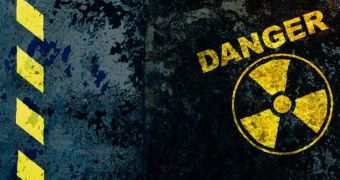Brainiacs now say that, all things considered, it might be possible to use a technique known as cosmic-ray radiography or muon radiography to speed up the process of cleaning up the crippled Fukushima nuclear plant in Japan.
This facility experienced a meltdown back in 2011, following an earthquake and its subsequent tsunami, and operator Tokyo Electric Power Co. has ever since been trying to get things under control.
As previously reported, efforts are now being made to decommission the facility and to keep tainted water present on site from leaking into the nuclear plant's surroundings and contaminate the environment.
The problem is that, in order to decommission the facility, specialists and workers must first figure out what exactly is going on inside the cores of the nuclear plant's reactors without damaging them in the process, Phys Org explains.
For the time being, all this probing is done with the help of robots or video endoscopies. Still, such invasive procedures are linked to an increased risk of releasing radiation, not to mention the fact that they fail to deliver a complete view of material location.
Scientist Duncan McBranch argues that, according to his and his colleagues' investigations into the matter at hand, cosmic-ray radiography has the potential to replace the robots and video endoscopies now in use at Fukushima, and even do a much better job than them.
More precisely, he claims that this technique, which is similar to the one used to obtain X-ray images, can be used to piece together accurate images of the cores of the nuclear reactors. Information obtained in this manner makes it easier to remove hazardous materials.
“This will allow plant operators to establish the condition of reactor-core material without the need to actually get inside,”Duncan McBranch, Los Alamos's Chief Technology Officer, explained in a recent interview with the press.
Furthermore, “Muon tomography will enable plant operators to see the location of the nuclear material inside, determine its condition, and provide crucial insight that can inform the design of a safer and faster cleanup.”
The scientists behind this research project have recently entered a partnership with Toshiba and are working on making the technique available for Tokyo Electric Power Co. It is estimated that, should Fukushima's operator embrace cosmic-ray tomography, it could finish decommissioning the nuclear plant about 10 years earlier than expected.
Besides, decommissioning activities would be much safer than they currently are, seeing how the risk of radiation leaks would greatly be reduced. Needless to say, this would greatly benefit the environment and public health.

 14 DAY TRIAL //
14 DAY TRIAL //